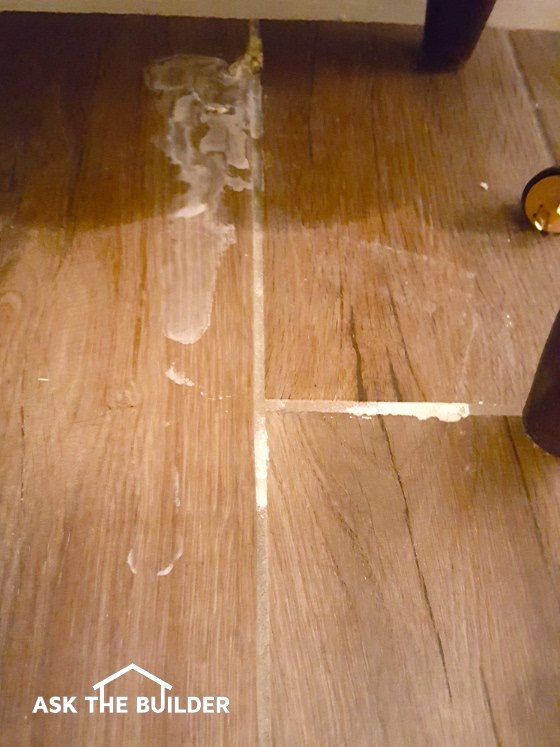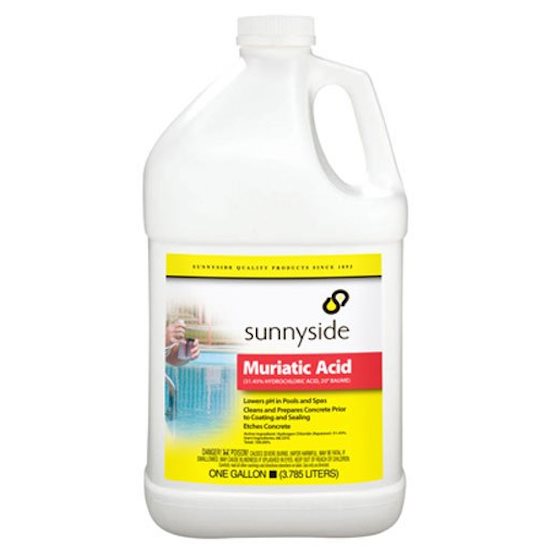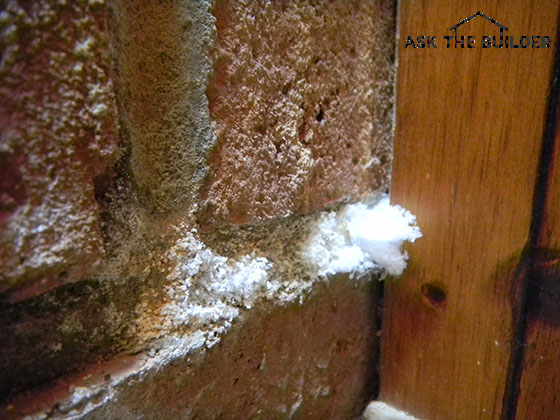Efflorescence Removal
Efflorescence Removal TIPS
- Brush off light fuzzy deposits
- Vacuum up salts or throw away
- NEVER wash them with water
- Use muriatic acid for thick flow efflorescence
- CLICK HERE to Get Tim's FREE & FUNNY Newsletter!
Removing Efflorescence
Efflorescence removal is not easy. The first step is to simply brush the salt deposits off the surface with a stiff broom. Vacuum salt deposits or brush them away are the the best methods of efflorescence removal.
It's important to realize the next rainfall will allow the salts to re-enter the brick or concrete if you don't get rid of the salt deposits or just allow them to lay on the surface . The problem then starts all over again when the water evaporates bringing the salts back to the surface.

This is efflorescence on new basement floor tile. The water infiltration needs to be stopped first. Copyright 2017 Tim Carter
Do NOT Use Water
Another key point is the use of water is not recommended. The water will dissolve some of the salts and actually drive them back into the masonry. These salts will subsequently re-appear when this secondary water evaporates.
Acid Wash Efflorescence Removal
It's important to realize that dilute solutions of muriatic acid can be used. However, BEWARE of this method.

Muriatic acid is powerful and needs to be treated with lots of respect. CLICK THE IMAGE TO ORDER SOME NOW.
Muriatic acid can cause serious eye and skin burns. The vapors are also very toxic. Muriatic acid, improperly applied to a masonry surface, can 'burn' the brick and cause discoloration.
Always dilute the muriatic acid with water. Try a solution of ten parts water to one part acid.
IMPORTANT TIP: This method of cleaning is only recommended for heavy flow deposits of salts that resemble stalagmites and stalactites in a cave.
Sealing Brick
Brick that is still experiencing efflorescence should not be sealed. If you do this, there is a possibility that you can actually damage the surface of the brick.

Efflorescence growing in the mortar of a brick fireplace. Photo Credit: Michael Hannum
The sealer can actually block the movement of salts to the surface of the brick. Now, you may think that is not such a bad idea. Well, here is what can happen.
Spalling Danger
The salts work their way to the sealer at the surface of the brick and stop. The concentration of the salts increases as the water evaporates. In certain instances, the salts begin to crystallize.
This process of crystallization can create enormous pressure on a microscopic level that can actually cause the face of the brick to pop off or spall.
Over the years, I've seen many different spellings of efflorescence. Here's my growing list: effervesce, effervescence, effervescent, effleresants, effloreflance, efflorescence, efflorressance, effluorescence, eflorescence, eflorescents, ellforesce and ifflorescence.
Column B033
3 Responses to Efflorescence Removal